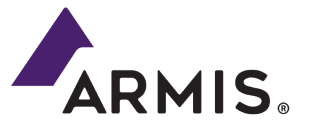
About the company
PUMA is one of the world’s leading sport-lifestyle companies that designs and develops footwear, apparel, and accessories.
At PUMA, they are in constant pursuit of faster. That extends beyond supporting the fastest athletes in the world. They also work to be fast in how they adapt to and connect with the constantly changing world around us. Through innovative design, iconic footwear and apparel, and authentic partnerships, they aim to always push what’s next in both sport and culture.
The company recently launched a new web frontend system that connects with Salesforce Commerce Cloud, Sanity CMS, backend systems, and multiple 3rd-party services and integrations. With this technological transition and the uncertainty that came with it, the DevOps team took the opportunity to improve their system observability dramatically.
Overview
Monitoring Challenges in the Modern World
PUMA’s production environment includes elements of Salesforce Commerce Cloud (SFCC) and uses Fastly CDN, which produces enormous volumes of data. With most observability solutions, there is an unavoidable tradeoff between the centralization of growing data and the associated costs and performance deficits that come with it.
With that said, not having visibility and proactive monitoring in place put PUMA at risk of damaging their customer experience and sustaining revenue loss due to incidents that didn’t trigger alerts to the team or took too long to resolve.
During a big sale event on PUMA.com in the US, they experienced a problem with a 3rd-party inventory service that was meant to check if an item was in stock and return a response. Subsequently, none of the orders received the response they needed, and they all failed.
Without comprehensive monitoring and alerts, it took an hour for the team to notice an issue with all orders failing before investigating and resolving it. During Private Sales, an hour of downtime can mean upwards of $100,000 in lost revenue. The team needed a way to monitor their systems’ data comprehensively and trigger notifications for events and anomalies such as higher than normal ‘request fail’ or ‘error’ ratios.
With our full stack observability solution, PUMA could leverage their log data in many ways. For example, they have logs that signal when an order is transitioned to ‘new’ or ‘failed.’ They can easily look at the ratio of ‘failed’ to ‘new’ orders and create a Ratio Alert to trigger when the ratio is higher than usual. This helps them respond to critical situations faster.
Driving Motivation for PUMA to Switch to Coralogix
As part of an initiative to build a new headless frontend and native mobile app, PUMA’s DevOps team for Global E-Commerce built a new public cloud infrastructure. In doing this, they improved their ability to access system data and saw the opportunity to approach observability from the ground floor.
Michael Gaskin, Senior DevOps Manager for the group, met our solution’s representatives at an Amazon Web Services (AWS) event and was intrigued by the potential of the unique in-stream data analytics engine and the ability to aggregate logs as metrics without indexing the raw log data.
When he continued exploring the platform’s capabilities, he saw that he could easily install a serverless layer to collect logs from AWS Lambda without needing a big professional services engagement or a ton of developer time.
“Once I installed that Lambda layer, I saw the logs from AWS Lambda streaming into the platform in the LiveTail view. I just thought, wow, this is good time-to-value.”


Michael Gaskin – Senior DevOps Manager at PUMA
Implementation & Adoption Supported by our DevOps Team
Almost immediately, the team decided to move forward with our solution and hit the ground running. They used the AWS Marketplace to simplify the acquisition process and were able to quickly get started with on-boarding.
To ensure the teams at PUMA had full visibility into their application data, the Customer DevOps team built custom serverless application repository apps that create AWS Lambda functions to pull logs in from Salesforce as well as get order data from Salesforce using the Open Commerce API.
Adoption in the development and infrastructure teams has been great. Developers and infrastructure teams immediately saw the potential in our platform. Moving forward, they plan to run an additional batch of training with another one of their development partners, as well as some of their regional business teams.
With the platform’s ease of use, the team hopes to onboard non-developer operations staff on the frontline in managing these websites and reporting issues. Our solution gives them the ability to investigate issues on their own and approach the right person with the contextual information needed to quickly resolve the issue.
Implementation & Adoption Supported by our DevOps Team
CDN Monitoring
Due to their volume, Fastly logs used to be sent to Amazon S3 for storage without an efficient way to query them. Now, Fastly logs are ingested to the platform for holistic monitoring with Logs2Metrics capabilities, alerting, and more.
Now, all Fastly logs are parsed, enriched, and sent to their S3 bucket where they can be queried directly from the platform. Our solution offers unparalleled access to archived data with the ability to query the data using multiple syntaxes and provide up to 72 hours of data in just a couple of minutes.
They are then directed down different data pipelines according to use case. Only Error and Critical-level logs are indexed to provide the team with lightning-fast queries. Info-level logs are kept in the Monitoring pipeline for monitoring and alerting – without needing to index them.
This allows for substantial cost savings while giving the team full flexibility to leverage all of their data at whatever granularity they need. With all data being stored in their own Amazon S3 bucket and powerful query abilities, the team essentially enjoys infinite retention.
Cloud-Native Monitoring
All the data from PUMA’s frontend, application and service layers running in AWS is now centralized and can be correlated with their Salesforce data. This gives a holistic view of their system behavior and health, and provides real-time insights.
Now, if a customer sees a blank screen when they visit the site or orders are failing, the team only has to look in our observability tool and can pinpoint the root cause using intuitive filters, ML-generated log templates, and more. It’s been perfect for troubleshooting issues raised by the developers, not only in production but in earlier development and staging environments as well.
For example, when the lead mobile app developer tested the credit card order in the UK in their staging environment, he kept getting an error response. Upon searching our tool over that time, they could immediately see that a fraud service was blocking the order from going through because of a required property missing in that environment.
In just a few minutes, they had an answer. The ease with which the team can pinpoint issues in their system and the power of our proactive alerting has sped up the development process by helping the team find the root cause of issues faster.
Summary
The ease with which the team can search across many different systems in the Explore UI improved observability for PUMA tremendously. Whether they’re looking for an error or wondering why an order didn’t go through, the team can easily investigate the root cause of issues for a quick resolution.
Real-time insights powered by our solution with the in-stream analytics engine, enable the team to monitor and get proactive alerts so they can stay on top of issues when they have extensive sales and product launches. Using Logs2Metrics, the team created custom dashboards with a lot of detail about site operations without needing to index the raw log data.
Additionally, the partnership and the customer success team to get metrics set up, turn those metrics into dashboards, do the custom development for data integrations, has all made the difference. The organization can now move a lot faster when compared with solutions they used in the past.
More to explore

AGS

Monday.com





